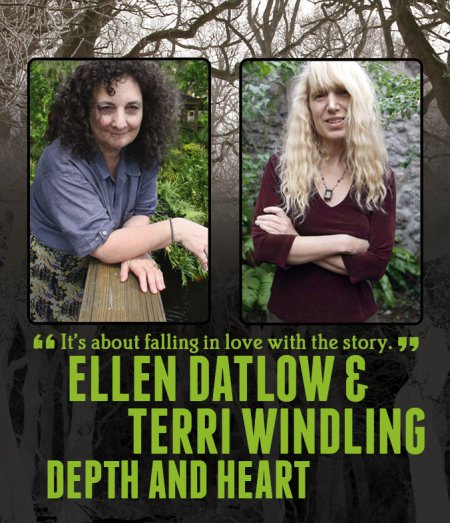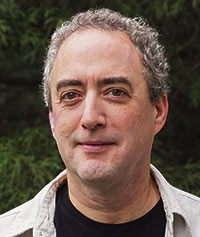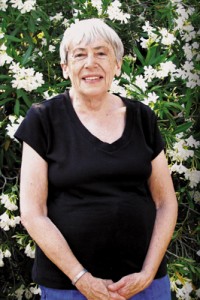Ellen Datlow & Terri Windling: Depth and Heart (part 1)

Ellen Datlow & Terri Windling are two of the most renowned and celebrated short fiction editors in our field, and have a working relationship dating back almost 30 years. The two have collaborated on dozens of projects, including 16 volumes of the Year’s Best Fantasy and Horror anthology series, which they co-edited from 1988-2003, with Windling choosing the fantasy half and Datlow the horror. (Datlow continued editing the horror side until the series ended in 2008; Gavin Grant & Kelly Link took over fantasy.) Their fairytale anthology series began with Snow White, Blood Red (1993) and continued with Black Thorn, White Rose (1994); Ruby Slippers, Golden Tears (1995); Black Swan, White Raven (1997); Silver Birch, Blood Moon (1999); and Black Heart, Ivory Bones (2000). They did a series of middle-grade fairytale anthologies as well: A Wolf at the Door and Other Retold Fairy Tales (2000), Swan Sister: Fairy Tales Retold (2003), and Troll’s Eye View: A Book of Villainous Tales (2009).
Their mythic fiction YA anthologies are The Green Man: Tales from the Mythic Forest (2002), The Faery Reel: Tales from the Twilight Realm (2004), The Coyote Road: Trickster Tales (2007), and The Beastly Bride: Tales of the Animal People (2010). Standalone anthologies the two co-edited include Sirens and Other Daemon Lovers (1998), Salon Fantastique: Fifteen Original Tales of Fantasy (2006), Teeth: Vampire Tales (2011), After: Nineteen Stories of Apocalypse and Dystopia (2012), and Queen Victoria’s Book of Spells (2013).
Both are accomplished solo practitioners as well. Ellen Sue Datlow was born December 31, 1949 in Manhattan, and studied English literature and philosophy at the State University of New York at Albany. She worked a variety of positions in publishing before being hired as associate fiction editor at Omni in 1979, working under editor Ben Bova and fiction editor Robert Sheckley. When Sheckley left in 1981, she took over his position and worked for Omni and Omni Online until 1998, then edited early online magazine Event Horizon for 18 months. She edited Sci Fiction from 2000 to 2005. She has also edited scores of anthologies, mostly horror, on her own, most recently The Doll Collection (2015) and The Monstrous (2015). Since 2009 she has edited The Best Horror of the Year series, and she also acquires short fiction for Tor.com. Datlow has been nominated for 43 World Fantasy Awards, and has won 10 times, giving her the lead in both the most nominations and the most wins. She has received multiple Hugo Award nominations for Best Professional Editor, winning five times, most recently in 2014. She won a Stoker Award for Life Achievement in 2011, and a Life Achievement World Fantasy Award in 2014. She lives in New York.
[ Further excerpts next week will focus on Terri Windling. ]
Excerpts from the interview:
Terri Windling: ‘‘So we were on parallel tracks, but I was very focused on fantasy, and you were focused on horror and science fiction.’’
Ellen Datlow: ‘‘Mostly science fiction then. The reason I got into horror was so it wouldn’t conflict with Omni. I was supposed to be buying science fiction and some fantasy for Omni, but I was not supposed to buy horror. My first original horror anthology was Blood Is Not Enough. Someone I worked with at Penthouse was talking to some publishers and they wanted to commission a bunch of anthologies. He approached me and said, ‘Hey, do you have five ideas for anthologies?’ I thought about the stories I couldn’t buy for Omni. All these horror stories at the time that Ben Bova would not let me buy, like ‘Down Among the Dead Men’ by Gardner Dozois & Jack Dann, which has been reprinted a lot, about a vampire in a concentration camp. There were several stories that I couldn’t buy for whatever reason at the time. Some would have been too controversial. That was how Alien Sex and Blood Is Not Enough came about. The stories were submitted to me for Omni but I turned them down and they were published elsewhere. So I used those plus new stories, creating anthologies that were half original and half reprints. I created these anthology ideas with themes like vampirism and alien sex. I wanted to edit a book of monkey tales, because I had to turn down ‘The Monkey Treatment’ by George R.R. Martin and ‘Pope of the Chimps’ by Robert Silverberg, but I never did that one. I’d always loved reading horror, but the reason I started editing it was to not conflict with my job at Omni – I was afraid they’d get pissed off if I did science fiction anthologies.’’
…
ED: ‘‘Horror is much more likely to be superficial, and I hate superficial horror. I hate the kind of horror that’s just a ‘boo’ and that’s it, unless it’s really, really short and effective. When I take a story for a year’s best, by the time the book comes out, I’ve read it at least five times, because I’m eliminating. When you’re doing a year’s best, it’s a process of elimination by the end, because you only get a certain amount of wordage. Towards the end I’d count up the stories I had starred and I’d say, ‘I have 300,000 words. I have to get it down to 125,000.’ I’d have to reread, reread, reread, and start eliminating. The ones that are left, to me, really affect me after reading them four times. Once in a while, on a first read I know I’m going to take a story immediately. It doesn’t happen often. I have a story coming out in an original anthology that I know I’m going to take for my year’s best, because I really love it.’’
…
ED: ‘‘I love doing the Year’s Best. Maybe I’ll say it’s the best, but for me, it’s the stories I love this year; my favorite stories. There are some writers in horror who are prolific and doing wonderful work. Paula Guran and I actually do compare what we’re taking for our year’s best anthologies. If a writer has more than one story out that we really like, we try not to repeat. This year we have four overlaps, I think, but we try to avoid that. If there are overlaps it just means there’s a consensus on that story. There are two stories in the last few years that I did not take in the Year’s Best for deliberate reasons. Even though I love them. One was ‘The Things’ by Peter Watts, which is the movie The Thing from the point of view of the alien. Everyone took it. Every science fiction year’s best took it. I really loved the story, but I had two problems. Number one, everyone was taking it, and number two, it’s from the Thing’s doing! I loved the story, though. The other one was ‘The Deepwater Bride’ by Tamsyn Muir. I loved that story, but I found out that Paula Guran was going to take it for her anthology, and I think Jonathan Strahan was going to take it too. Tamsyn had another story that was not as popular as ‘Deepwater Bride’, called ‘The Woman in the Hill’, so I ended up taking that instead.’’
…
ED: ‘‘Terri wrote all the intros for the original anthologies. She’s the expert. I hate writing introductions.’’
TW: ‘‘When you do it, Ellen, you do it well. But yeah, I generally write the intros. I enjoy writing. And you do parts of the job I hate.’’
ED: ‘‘You mean the contracts?’’
TW: ‘‘The organization, including contracts. You make the trains run on time.’’
ED: ‘‘But we always pick the table of contents together. Actually, you’re better at the table of contents than I am.’’
TW: ‘‘Yeah, I like that part. And you’re really good at the back-and-forth with the authors.’’
ED: ‘‘It depends on who’s worked more with the author. There were some writers I didn’t feel comfortable editing, or maybe I wasn’t wild about the story. I do most of the line editing. In terms of story order, for me the first story and the last story are the most important. You want to invite the reader in. The first story can’t be too dense. It has to be inviting, and it can’t be too weird. The last story should either be the strongest, or the next-to-last story should be the strongest – it depends. You don’t want something too long in the beginning. The rest of it, we kind of rearrange like cards.’’
TW: ‘‘I do it literally with cards. I have index cards. I write the name of every story on a card, and also whether it’s written in first person or third person. Sometimes I’ll mention the setting, or what kind of myth it’s based on, or female or male protagonist – I put down all of the identifying things. Then I spread all the cards out on the floor and move them around until the balance and flow from story to story feels right.’’
ED: ‘‘That’s a good way to do it. You can’t guarantee the reader will read it in order, but you have to assume they will, because there’s no other way to organize it. I did Nightmares: A New Decade of Modern Horror, with Tachyon, and I covered 2005-2015. I did those in the order they were published, but that’s not usually the way it’s organized.’’
TW: ‘‘You can take a weaker story and place it properly, and sometimes the conversations it has with the stories on either side are strengthening. There’s a real art to putting an anthology together. There are some readers (a blessing on their houses) who actually read the stories in order, and reviewers who read it that way – and plenty who don’t. Thems the breaks. For the Year’s Best Fantasy and Horror series, however, we never did the story ordering. Jim Frenkel did it, and he did a wonderful job.’’
Read the complete interview in the June 2016 issue of Locus Magazine. Interview design by Francesca Myman.





